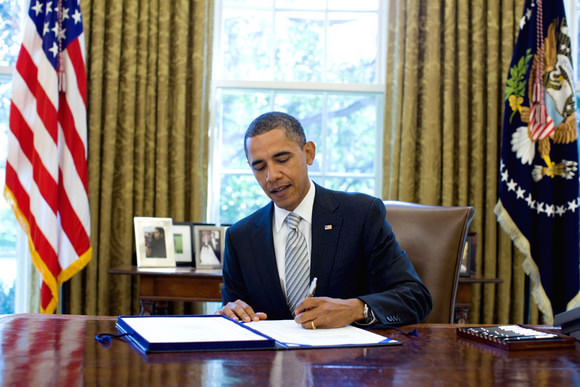[/caption]
President Barack Obama signed the NASA 2010 Authorization Act into law Monday, giving the go-ahead for $58.4 billion be spent on NASA programs over the course of the next three years. However, where and how that money will be spent – has yet to be decided. For that the space agency has to wait for appropriations to wrangle out the specifics in the upcoming legislative sessions. But this much is known for certain: there will be an additional shuttle flight added, the life of the International Space Station will be extended to 2020 – and perhaps beyond, and the development of heavy-lift rocket will start as early as 2011.
“We will foster a growing commercial space transportation industry that will allow NASA to focus our efforts on executing direction in the act to start work on a heavy-lift architecture to take astronauts beyond low-Earth orbit and to develop a multipurpose crew vehicle for use with our new space launch systems,” said NASA Administrator Charles Bolden when he thanked the president for signing the bill. “Also, we will continue to invest in green aviation and other technologies that make air travel safer and more efficient.”
This particular bill was one of two that were vying for dominance in the House and Senate over the past weeks. After the NASA FY 2011 Budget was announced it was clear that many were unhappy with the direction this budget entailed and wanted a balanced compromise. Senator Bill Nelson (D-FL) led the charge to see that while commercial firms were included in the new space mix, decades of skill and experience of workers at Kennedy Space Center and other centers and contractors are not lost in this transition period.
“We now have a way forward for NASA,” Nelson said during a press briefing today. “Now with the signing of this legislation into law, NASA has a blueprint, NASA has a roadmap. The goal is not the moon. We were there 40 years ago. The goal is Mars by a flexible path. The president has stated that goal and this legislation which he is signing into law will now set us on that course.”
Nelson has been working closely with U.S. Rep Suzanne Kosmas, whose district includes NASA’s Kennedy Space Center (KSC). Both of the lawmakers took time to acknowledge that this bill was a bipartisan effort that included concerned members from both political parties.
Kosmas had been highly critical of the president’s plans for NASA, stating that the changes he had planned would turn the space flight ‘gap’ into an “abyss.” Since that time numerous lawmakers including Kosmas have worked to see that NASA’s way forward contained elements from both established space companies as well as new start ups – the so-called ‘NewSpace’ groups.
Under this bill, the development of a new heavy-lift rocket would start as early as next year. This is a far cry from the 2015 review date for heavy-lifts that Obama had called for. This means that the space flight gap that NASA is facing potentially stands to be far less expansive than under the president’s original plans. Nelson stated that he views this and other elements of the bill as ensuring that NASA will have a very bright future.

